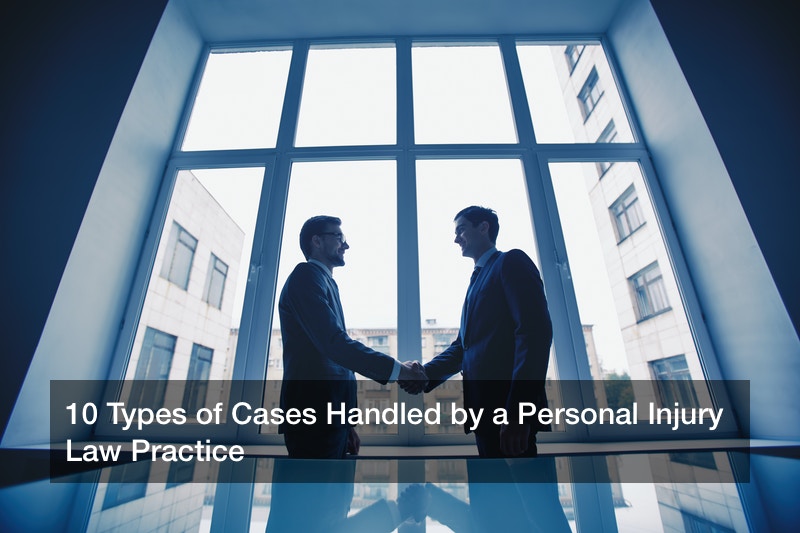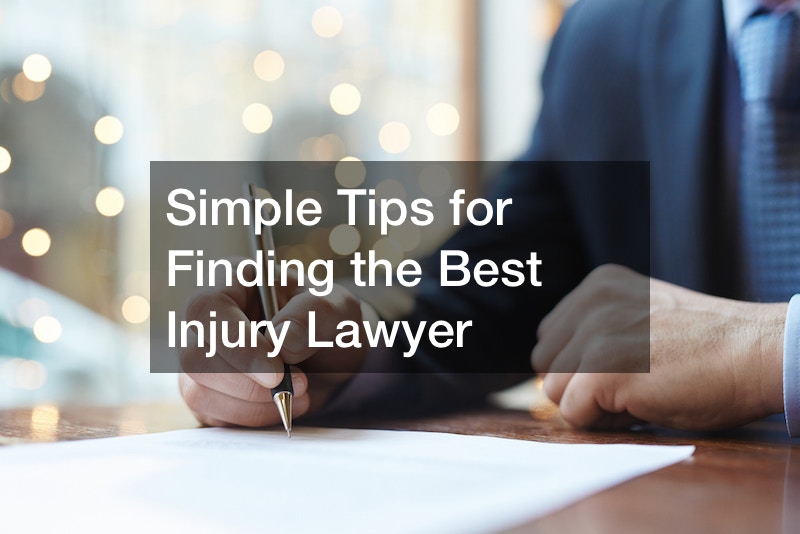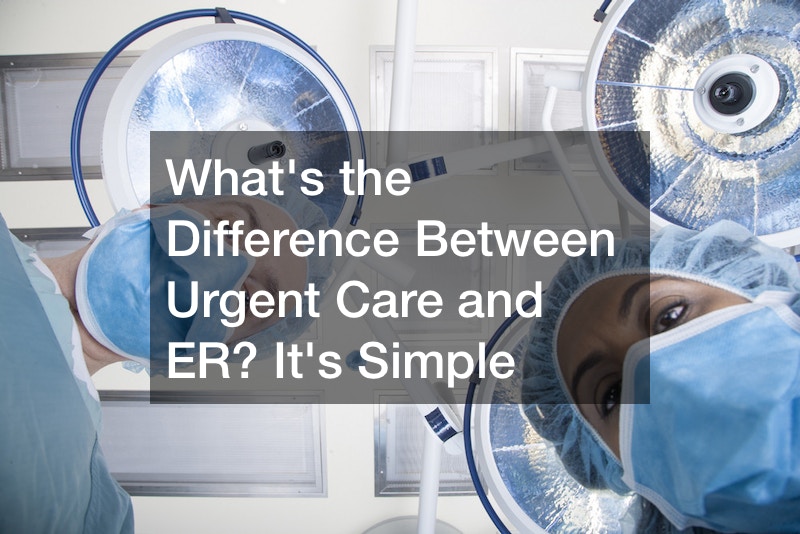
Personal injury law practices handle more than just auto accidents. Law students do not study personal injury law. Instead, they study tort law which covers all wrongs that people do to each other based on a breach of their unwritten legal responsibilities.
Most potential clients are unaware of the variety of cases that a personal injury law practice covers. Here are ten injuries that a personal injury law practice can assist with:
Traffic Accidents
Personal injury law practices are most commonly associated with car accidents. However, personal injury lawyers can handle a variety of traffic accidents, including pedestrian accidents, motorcycle accidents, and truck accidents. A personal injury lawyer can even represent you if you were a passenger in a vehicle, such as a taxi, bus, or ride share, and were injured in a traffic accident.
The usual principle in all these cases is that when someone drives negligently and causes an accident, their insurance is responsible for paying the damages caused, up to the policy limits. For example, if a driver causes $50,000 of damage in an accident, but only has a $30,000 automobile insurance policy, the insurance company is responsible for $30,000 while the driver will be responsible for the remaining $20,000.
As mentioned above, personal injury lawyers can handle any traffic accident case including:
- Pedestrian or cyclist: Over 500 pedestrians were killed in nearly 8,000 auto crashes in Florida during 2008. When a pedestrian or cyclist is injured or killed as the result of a driver’s negligence, the driver can be sued.
- Motorcycle: According to the Insurance Information Institute, motorcycles are 27 times more likely to be involved in a fatal accident than cars and trucks. Motorcycles are less visible than cars and trucks, which makes them easy for drivers to overlook. Moreover, motorcyclists are left exposed by the motorcycle. This makes them more likely to suffer serious injuries. When a driver negligently collides with a motorcyclist, a motorcycle accident lawyer can help the motorcyclist obtain compensation for any injuries and property damage.
- Commercial vehicle: Trucks and delivery vans are difficult to maneuver and have large blind spots. They are also in traffic for more miles and more hours than a typical private vehicle. When you are in an accident with a commercial vehicle, the claim may be handled differently than an ordinary auto accident because of the involvement of the business’s general liability insurance company.
Workplace Injury
In most cases, on-the-job injuries are covered by workers compensation insurance. The benefit of the workers comp system is that you do not need to prove negligence to receive compensation. In fact, in most states you are eligible for workers comp even if you were responsible for the mistake that caused your injury.
However, issues with receiving full compensation can arise and you will need a workers comp lawyer to help you with your workers comp claim. Some examples include:
- Pre-existing condition: Workers comp claims can be denied if the insurer thinks that your injury was a pre-existing condition rather than being caused by your current job.
- Causation: Even if you suffered an incident or accident, workers comp will only cover the injuries caused by the incident or accident.
- Severity: The workers comp insurer may dispute the severity of your injuries and the treatment that you require. More specifically, the insurer may question whether you are exaggerating, or even faking, your injuries.
In most states, your employer is responsible for reporting your workplace injury to its workers comp insurer. The insurer investigates your claim and determines your entitlement to compensation for medical bills and lost wages.
In exchange for workers comp protection, workers are barred from suing their employers for on-the-job injuries. Some states allow grant exceptions to allow lawsuits for deliberate violations of safety laws by the employer and lawsuits under civil rights laws for abuse resulting from discriminatory practices. For example, if you were injured because your employer does not provide safety equipment to some employees because of their race, you may still be able to sue the employer for discrimination even if you are barred from suing your employer for the injury.
Medical Malpractice
Personal injury law practices also handle medical malpractice cases. When your health care provider fails to give you medical care that is reasonable under the circumstances and you are harmed as a result, you may need to call a medical malpractice lawyer.
Some examples of medical malpractice include:
- Diagnosis errors: These errors occur when a medical professional diagnoses you with something you do not have, or misses a diagnosis of something you do have. For example, if a radiologist misses a lump on a mammogram and, as a result, misses your case of breast cancer, the radiologist may have committed medical malpractice.
- Treatment errors: When a medical provider is negligent in treating you, a treatment error has occurred. Some examples include operating on the wrong limb, prescribing a medication the doctor is aware you are allergic to, and botching a medical procedure.
- Communication errors: Medical providers are supposed to fully discuss all your treatment options with you. If a medical provider fails to discuss a known side effect or an obvious risk, you may be able to sue for medical malpractice.
Medical malpractice cases are similar to other personal injury cases because most medical providers have medical malpractice insurance. Consequently, any claim against the medical provider will be forwarded to the malpractice insurer for investigation. Medical malpractice lawyers are able to resolve many cases without ever going to trial by negotiating a settlement with the insurer. However, if the insurer is unable or unwilling to work with your lawyer, you may end up going to trial.
Slip and Fall Accidents
Another area of knowledge for a personal injury law practice is premises liability. These cases are more commonly called “slip and fall” cases. However, premises liability includes injuries beyond slipping on a grape in a grocery store. Some examples of premises liability cases personal injury lawyers can handle include:
- Slip and fall: This covers many of the premises liability cases that personal injury lawyers handle. A slip and fall case occurs when a hazard the property owner or manager knew about or should have known about causes harm to a person. A liquid spill, broken railing, or icy walkway could lead to a slip and fall case.
- Poor lighting: Poor lighting can lead to all kinds of injuries when a person missteps or collides with something. Poor lighting can also be responsible for collisions and even criminal activity in parking lots, alleys, and stairways. If you can prove that the property owner or manager was aware of the hazard poor lighting posed and they failed to remedy it, you can sue.
- Electrical hazards: Exposed wires and mis-wired electrical fixtures can cause severe injuries to guests and tenants. An unreasonable failure to fix electrical problems or warn potential victims of the hazard could open the door to a lawsuit.
Individuals or groups can file premises liability cases against businesses, such as apartment buildings, stores, hotels, and casinos, or private people. For example, if you have a party in your backyard and fail to warn guests of a broken railing around your deck, a guest who falls due to the broken railing might have the right to sue you.
Animal Attacks
Personal injury attorneys with a personal injury law practice can also help with dog bite injuries and other animal attacks. When a domestic animal injures someone, such as a household pet, the personal injury attorney usually files a claim against the pet owner’s home owner’s insurance policy.
In some states, a pet owner is always responsible for injuries their pet causes. These states use a standard called “strict liability.” In a strict liability state, it would only be necessary to show that the pet was responsible for the injury to be compensated for the injury.
In other states, pet owners are only responsible for pet attacks that resulted from negligence. In these states, the pet owner would need to know of the pet’s dangerous behavior to be liable.
Most states presume non-domestic animals, such as snakes and other wild animals, to be dangerous. Since owners cannot train these animals, the owner assumes all risk of injuries caused by the animal. Anyone injured by the wild animal would ordinarily be compensated by the owner regardless of whether the owner was aware of the animal’s danger.
Defective Products
When a product injures someone, the designer, manufacturer, and retailer of the product might be liable for the injury. A personal injury law practice can use three different theories to establish product liability:
- Design defect: A design defect exists when a product is inherently flawed. A product with a design defect has no safe use. An example of a product with a design defect includes nausea medication that causes birth defects, asbestos, and lawn darts.
- Manufacturing defect: Manufacturing defects occur when the product has a safe use, but the manufacturer made it in a way that rendered the product dangerous. The most famous example comes from the Bridgestone tires that auto accident lawyers discovered to be improperly manufactured so that the treads separated. These defective tires led to a redesign of the Ford Explorer and a recall of 6.5 million tires.
- Warning defect: When a product has an unsafe use or can produce adverse effects, the failure to warn of those hazards constitutes a warning defect. A well-known example of a warning defect was the failure of the tobacco companies to warn smokers of the health effects of tobacco use despite knowing of the dangers.
Negligence
Personal injury law practices are capable of handling any cases involving negligence, even if they do not fall neatly into other categories of cases. Specifically, accident attorneys can handle any situation where:
- One person owes a duty of care to another person: A duty of care can arise from a special relationship or just the ordinary responsibilities of neighbors or bystanders.
- The person breaches the duty of care: The breach of a duty of care usually means that the person failed to act in a reasonable manner under the circumstances. The breach can be an act or an omission (a failure to act).
- The victim suffered damage: Damage can be in the form of property damage, bodily injury, or even death.
- The breach was the legal and factual cause of the damage: The usual legal test for causation is whether the damage was a foreseeable consequence of the negligent act or omission.
An example of negligence includes a worker who fails to secure an area before trimming a tree and mistakenly dropped a branch on a pedestrian. In this case, the worker’s employer is responsible for the worker’s negligence and its business liability insurer would pay the pedestrian’s medical bills and other consequential damages in response to a claim by a personal injury law practice.
Assault and Battery
Personal injury law practices handle both negligent acts and intentional acts. For example, assault and battery is a deliberate act a person takes to touch another person. Examples of assault include:
- Fights: One person striking another during a fight constitutes battery. This applies whether the person who threw the punch intended to strike the victim or inadvertently struck the victim. In other words, once a person intentionally throws a punch, that person commits battery regardless of who it hits.
- Sexual assault: People who have been sexually assaulted can file a personal injury lawsuit against the perpetrator of the assault. This allows the person to recover damages against the perpetrator for injuries and consequential damages.
- Police abuse: An intentional act to restrain, injure, or kill someone by police who know that the situation does not call for lawful action would be an act of battery or false imprisonment by the police. These can form the basis of a lawsuit against the police.
The benefit of filing a lawsuit for an intentional tort, such as battery, rather than negligence is that the plaintiff does not need to prove that the plaintiff was damaged. Rather, the court presumes damages. The drawback is that insurance policies rarely, if ever, cover intentional acts. Thus, if a plaintiff sues a drunk driver for battery and negligence in causing an auto accident, the driver’s auto insurance company would only pay the damages associated with the negligence and the driver would be responsible for any damages arising from the battery.
Defamation
Injury lawyers with a personal injury law practice are not just concerned about physical injuries and property damage. They can also handle cases of injury to a person’s reputation. Defamation, which used to be broken into libel and slander, is any false public statement that calls a person’s character and reputation into disrepute.
In the era of social media, defamation has gained new life as grounds for lawsuits. To prove defamation, a plaintiff must show:
- False factual representation: Opinions are generally not actionable, only false statements of fact.
- Publication: At least one other person must receive the statement in word or writing.
- Fault: The speaker must know the statement is false or make the statement without taking reasonable measures to determine its truth.
- Damage: The victim must suffer reputational damage from the statement.
Personal injury cases can take many different forms. However, any time a person suffers an injury as a result of someone else’s actions, a personal injury law practice can help.






